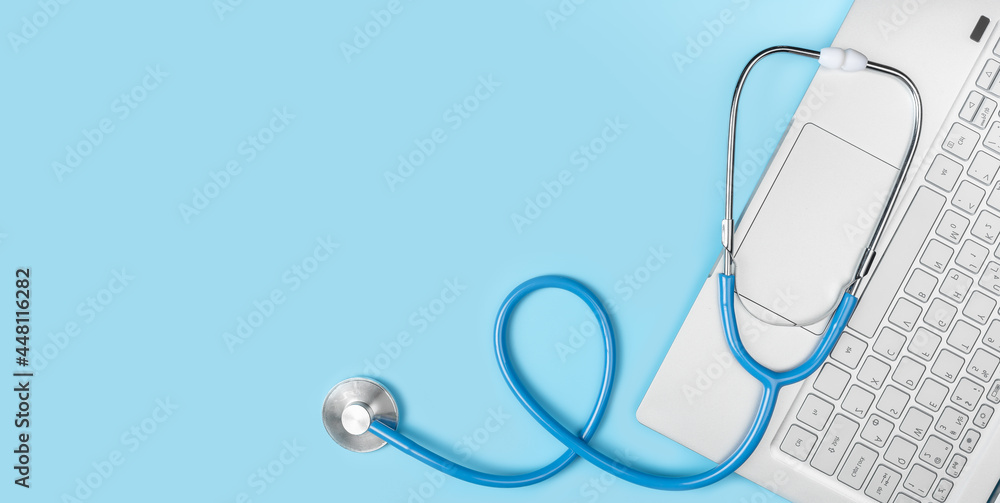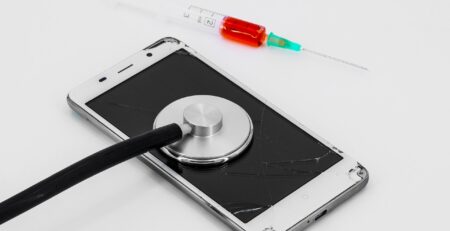Computer Health Check: The First Step in Cybersecurity
In an era defined by digital interconnectedness, where our personal and professional lives are intricately woven into the fabric of the online world, the importance of cybersecurity cannot be overstated. The rising tide of cyber threats and malicious activities necessitates a proactive approach to safeguarding our digital assets and privacy. At the forefront of this defense lies the concept of a “Computer Health Check,” a fundamental step that serves as the cornerstone of an effective cybersecurity strategy.
Just as we prioritize regular medical check-ups to monitor our physical well-being, a Computer Health Check entails a comprehensive assessment of our digital devices, systems, and networks. This process delves into the heart of our technological ecosystem, identifying vulnerabilities, weaknesses, and potential entry points for cyber attackers. By proactively diagnosing and addressing these issues, we fortify our digital defenses, creating a robust barrier against the ever-evolving landscape of cyber threats.
In this article, we will delve into the critical significance of a Computer Health Check as the initial step in cybersecurity. We will explore the key components of this process, ranging from software updates and malware scans to password management and network security. By understanding the essential role that a Computer Health Check plays in our digital lives, we empower ourselves to navigate the online realm with confidence, resilience, and an unwavering commitment to securing our virtual domain.
Understanding Cybersecurity and Computer Health Check
Cybersecurity and its relevance in the digital age
Cybersecurity encompasses the practices, technologies, and strategies designed to protect digital systems, networks, and data from unauthorized access, cyberattacks, and data breaches. In our increasingly digital world, where sensitive information, critical infrastructure, and personal communication are reliant on digital platforms, cybersecurity has become paramount to safeguarding privacy, ensuring data integrity, and maintaining trust in the digital ecosystem.
The concept of a computer health check and how it contributes to a secure online experience
A Computer Health Check is a systematic process of evaluating the overall security and performance of a digital device, such as a computer, smartphone, or tablet. It involves a comprehensive analysis of the device’s software, hardware, and network settings to identify vulnerabilities and potential security gaps. By conducting regular Computer Health Checks, users can proactively detect and address security weaknesses before they are exploited by cybercriminals.
The primary goal of a Computer Health Check is to create a resilient digital environment that defends against cyber threats. This involves updating software to patch known vulnerabilities, scanning for malware and viruses, optimizing system settings for privacy and security, and ensuring that all safeguards are in place to thwart unauthorized access.
The analogy between regular health check-ups for humans and computer health checks for devices
The analogy between regular health check-ups for humans and Computer Health Checks for devices is strikingly apt. Just as individuals undergo routine medical examinations to catch health issues before they escalate, regular Computer Health Checks allow users to identify and rectify security vulnerabilities before they are exploited by cyber attackers.
In both cases, prevention is key. Just as maintaining a healthy lifestyle can prevent physical ailments, consistently monitoring and fortifying the security of digital devices can prevent data breaches, identity theft, and unauthorized access. Just as early detection of medical problems can lead to timely intervention, early detection of security weaknesses through Computer Health Checks can lead to swift mitigation.
In a digital landscape fraught with cyber threats, cybersecurity is paramount. The concept of a Computer Health Check serves as a proactive measure, akin to regular health check-ups, to maintain the security and integrity of our digital devices. By recognizing the analogies between human health and digital security, we underscore the importance of prevention and vigilance in safeguarding both our physical and virtual well-being.
The Consequences of Ignoring Computer Health

Potential risks and threats associated with neglecting computer health
Neglecting computer health can have dire consequences, leaving users vulnerable to a range of risks and threats that exploit security weaknesses. Malware infections, data breaches, identity theft, ransomware attacks and unauthorized access are included in here.
Without regular updates and security patches, devices become susceptible to malware infections that can compromise data, steal personal information, and even render devices unusable. Weak security measures can lead to data breaches, allowing cybercriminals to access sensitive information such as financial records, login credentials, and personal communications. Neglected computer health can result in personal information being stolen, leading to identity theft where cybercriminals impersonate users for financial gain or illegal activities. Ignored security updates can expose users to ransomware attacks, where cybercriminals encrypt a device’s data and demand a ransom for its release. Unprotected devices can be easily infiltrated, giving cyber attackers the ability to control devices, steal information, and perpetrate further malicious activities.
Real-world examples of cyberattacks and breaches that could have been prevented with proper computer maintenance
Several high-profile cyberattacks could have been prevented with proper computer maintenance. In 2017, the WannaCry ransomware exploited a vulnerability in outdated Windows systems, affecting hundreds of thousands of computers worldwide. Regular updates could have mitigated the risk. In 2017, Equifax suffered a massive data breach that exposed sensitive data of 147 million people. The breach was attributed to unpatched software. In 2017, the NotPetya ransomware attack targeted organizations by exploiting unpatched software vulnerabilities.
The possible negative impacts on personal data, financial stability, and online reputation
Neglecting computer health can result in severe negative impacts. Unprotected devices expose personal and financial data, leading to identity theft, financial loss, and personal privacy violations. Cyberattacks can lead to financial loss through stolen banking credentials, fraudulent transactions, or ransom payments. Breaches can tarnish an individual’s or business’s reputation, leading to loss of trust from clients, customers, and partners. In some cases, organizations failing to protect user data can face legal and regulatory penalties.
Ignoring computer health can expose users to an array of risks that compromise personal data, financial stability, and reputation. Real-world examples of cyberattacks underscore the urgent need for regular maintenance and security measures. By prioritizing computer health, individuals and organizations can safeguard themselves against the ever-present threats of the digital age.
Components of an Effective Computer Health Check
The essential elements of a comprehensive computer health check, including hardware, software, network, and user behavior
When assessing hardware; Check for physical damage or signs of tampering. Ensure proper cooling and ventilation to prevent hardware overheating. Clean the device to prevent dust accumulation that can affect performance. When considering on software updates and patches; Regularly update the operating system, applications, and software to fix vulnerabilities. Enable automatic updates to ensure timely installation of security patches. In malware and virus scans; Run thorough scans using reputable antivirus software to detect and remove malware. Schedule regular scans to proactively identify potential threats.
Secure your Wi-Fi network with a strong password. Use encryption protocols (WPA3) to protect data transmitted over the network. Enable the device’s built-in firewall or install a reputable firewall application. Configure the firewall to block unauthorized incoming and outgoing connections. Use strong, unique passwords for different accounts. Consider using a password manager to generate and store passwords securely. Educate users about phishing scams, social engineering, and safe online behavior. Encourage skepticism toward unsolicited emails, attachments, and links. Regularly back up important data to an external drive or cloud storage to mitigate data loss in case of a breach.
Basic computer health check guide
Inspect the device for physical damage or unusual wear. Ensure the operating system and all applications are up to date. Run a full scan using reputable antivirus software. Check router settings, update firmware, and change default passwords. Enable the device’s firewall or install a trusted firewall application. Update passwords for all accounts with strong, unique combinations. Educate yourself and others on safe online behavior and how to recognize phishing attempts. Regularly back up important data to an external source or the cloud.
The importance of using reputable antivirus software, firewalls, and other security tools
Reputable antivirus software can detect and remove malware, protecting your device from a range of threats. Firewalls act as barriers between your device and potential attackers, monitoring and controlling network traffic. Password managers help generate strong, unique passwords and securely store them, reducing the risk of unauthorized access.
By incorporating these essential elements and following a comprehensive computer health check guide, users can significantly enhance their cybersecurity posture, ensuring a safe and secure digital experience.
Benefits of Regular Computer Health Checks

The advantages of conducting regular health checks for computers
Conducting regular computer health checks offers a multitude of advantages that go beyond just safeguarding against cyber threats. These benefits contribute to overall device performance, longevity, and the quality of the user experience.
Regular computer health checks optimize system performance by identifying and rectifying issues that can slow down the device. These issues might include software conflicts, unnecessary background processes, or outdated drivers. By addressing these concerns, devices operate more efficiently, resulting in faster boot times, smoother multitasking, and improved responsiveness. Proper maintenance through regular health checks can extend the lifespan of devices. By identifying and addressing hardware and software issues early on, users can prevent wear and tear that can lead to irreversible damage. This means fewer hardware failures and a longer functional life for the device, ultimately saving users from premature replacements. A well-maintained computer provides a seamless and satisfying user experience. Applications launch quickly, tasks are completed without frustrating delays, and users can enjoy the device’s full capabilities without disruptions. A positive user experience contributes to productivity and overall satisfaction.
How early detection of vulnerabilities can prevent more significant issues down the line
One of the most crucial benefits of regular computer health checks is the early detection of vulnerabilities and security weaknesses. By identifying potential entry points for cyberattacks, users can take proactive measures to address these issues before they are exploited by malicious actors. This prevention minimizes the risk of data breaches, malware infections, and unauthorized access.
Small problems can escalate into significant issues if left unaddressed. Regular health checks allow users to detect and fix issues before they become major concerns. For instance, a minor software glitch that causes occasional crashes could evolve into a complete system failure if not addressed promptly. By addressing issues early, users can avoid data loss, extensive repairs, and costly downtime. Regular health checks can lead to cost savings in the long run. By preventing major problems and extending the lifespan of devices, users reduce the need for frequent repairs or replacements. Additionally, preventing security breaches and data loss can spare users the financial burden of dealing with the aftermath of cyberattacks.
How to Perform a Computer Health Check
Performing a computer health check is an essential step in maintaining the security and functionality of your device. Follow these steps to ensure your computer is in optimal condition.
Ensure your operating system is up to date with the latest security patches and updates. Enable automatic updates if available. Update all installed applications, including web browsers, media players, and productivity software.
If you don’t have antivirus software installed, choose a well-known and trusted program. Run a full system scan to detect and remove malware. Use reputable antimalware tools like Malwarebytes to scan for and eliminate malware. Check for any physical damage, loose cables, or unusual noises. Ensure proper ventilation to prevent overheating. Secure your Wi-Fi network with a strong password and encryption (preferably WPA3). Enable your computer’s built-in firewall to block unauthorized incoming and outgoing connections.
Change passwords for your accounts regularly, using strong and unique combinations for each. Consider using a password manager to store and generate complex passwords. Schedule regular backups of your important data to an external hard drive or cloud storage. This helps prevent data loss in case of hardware failure or cyberattacks.
Use the built-in disk cleanup tool to remove temporary files, cache, and other unnecessary data. Ensure your hardware device drivers are up to date to maintain compatibility and performance. Learn to identify phishing emails and scams. Avoid clicking on suspicious links or downloading attachments from unknown sources. Download software only from reputable sources to avoid downloading malware or potentially harmful applications. Keep up to date with cybersecurity news and best practices to stay ahead of emerging threats.
By following these steps and conducting regular computer health checks, you can enhance your device’s security, performance, and longevity. Prevention is key to avoiding potential issues and ensuring a smooth and secure computing experience.
Professional Computer Health Check Services

Role of professional IT services in performing thorough computer health checks
Professional IT services play a crucial role in performing thorough and comprehensive computer health checks. These services are especially valuable for individuals, businesses, and organizations that require expert assistance to ensure the security, performance, and stability of their computer systems.
Advantages of seeking expert help, especially for complex systems or businesses
IT professionals are well-versed in the complexities of computer systems, networks, and cybersecurity. Their deep understanding allows them to identify potential vulnerabilities and security gaps that might be overlooked by non-experts. Professional IT services can conduct a holistic evaluation of hardware, software, network configurations, and security protocols. This comprehensive approach ensures that no aspect of the system is left unchecked.
IT experts can provide tailored recommendations based on the specific needs and requirements of the individual or business. This personalized approach helps implement solutions that align with the organization’s goals. For businesses with intricate IT infrastructures, professional services are essential. Complex networks, multiple devices, and specialized software require specialized knowledge to ensure optimal functionality and security. IT professionals have the tools and experience to efficiently perform health checks and address issues. This saves valuable time for individuals and businesses, allowing them to focus on core activities.
Guidance on choosing a reliable and reputable service provider
Look for service providers with a proven track record and a team of experienced professionals. Check their credentials, certifications, and client testimonials. Ensure the service provider offers a comprehensive range of services, including hardware and software assessment, network security analysis, and cybersecurity solutions. Research the provider’s reputation within the industry. Online reviews, references from previous clients, and word-of-mouth recommendations can help gauge their credibility. A reliable service provider should be willing to tailor their services to your specific needs. Avoid one-size-fits-all solutions. Choose a service provider that communicates clearly and transparently about their processes, findings, and recommendations. Since the purpose of the health check is security, ensure the service provider follows best practices for data protection and confidentiality. While cost is a consideration, prioritize the value you’ll receive. A thorough health check that prevents potential threats and issues can save you substantial costs in the long run.
Preventive Measures and Ongoing Maintenance
Maintaining a healthy computer system requires a proactive approach and ongoing vigilance. By implementing preventive measures and practicing regular maintenance, you can ensure the security, performance, and longevity of your devices.
Keep your operating system up to date with the latest security patches and feature updates. Enable automatic updates for convenience. Regularly update all installed applications, including web browsers, antivirus software, and productivity tools. Use strong, unique passwords for each account. Combine uppercase and lowercase letters, numbers, and special characters to create complex passwords. Consider using a password manager to generate, store, and manage passwords securely. Schedule frequent backups of your important data to an external hard drive or cloud storage. This safeguards your information in case of hardware failure or cyber incidents. Store backups in multiple locations to prevent data loss in case of physical damage or theft.
Be cautious of suspicious emails, links, and attachments. Verify the authenticity of requests for sensitive information. Download software only from reputable sources to avoid malware and potentially harmful applications. Integrate computer health checks into your routine to identify and address potential vulnerabilities and issues. Periodically review your system’s security settings, firewall configurations, and network protocols. Stay updated with the latest cybersecurity news and trends. Awareness of emerging threats helps you stay ahead of potential risks. Educate yourself and your family or employees about safe online practices, recognizing phishing attempts, and avoiding risky behaviors. Seek professional IT services for complex systems or if you’re unsure about performing certain tasks yourself. Make computer health checks a regular part of your cybersecurity practices. Conduct them on a schedule that suits your usage and needs.
By implementing these preventive measures and incorporating ongoing maintenance, you establish a strong foundation for a healthy and secure computer system. Remember that technology evolves, and cyber threats change over time. Consistently updating your security practices and staying informed ensures that you’re well-prepared to defend against potential risks and maintain the integrity of your digital environment.
Conclusion: Empowering Your Cybersecurity Journey
In an era where our lives are intricately woven into the digital fabric, the importance of cybersecurity cannot be overstated. This journey has underscored the critical role that computer health checks play in creating a secure and resilient digital environment. These checks are not just a technical task; they are a proactive approach to safeguarding our devices, data, and online experiences.
From keeping our operating systems updated to practicing safe online habits, we’ve explored a range of preventive measures that empower us to navigate the digital landscape with confidence. We’ve learned that by conducting regular computer health checks, we fortify our defenses against cyber threats, identify vulnerabilities before they escalate, and maintain the performance and longevity of our devices.
The path to a secure digital environment starts with us – the users. By integrating computer health checks into our routine cybersecurity practices, we take ownership of our online safety. As technology continues to advance and cyber threats evolve, a proactive stance becomes paramount. The empowerment to protect our digital lives lies within our hands.
As you close this article, consider the power of a simple yet impactful action: performing regular computer health checks. Let this be your call to action. Commit to the well-being of your devices, your data, and your online presence. By implementing this foundational step, you contribute to a safer, more secure digital world for yourself and for those around you. Your cybersecurity journey begins today.
When it comes to revitalizing your computer’s performance, TechBox is the name you can trust. Our dedication to excellence, unmatched expertise, and customer-focused approach make us the preferred choice for individuals seeking top-tier computer health solutions. Don’t settle for subpar performance – contact TechBox today and unlock your computer’s true potential with our comprehensive health check service.










